At the foot of Phanom Rung mountain, Kuti Ruesi Ban Nong Bua Rai (กุฎิฤษีบ้านหนองบัวราย) was the temple for one of the 102 arogayasala (hospitals) built by King Jayavarman VII (r. 1182-1219) around the empire. Like a lot of his projects, it was not fully completed.
Like other arogayasala, it’s built with laterite using sandstone for the trim and has a single east-facing tower for the main sanctuary with a single bannalai to its southeast, both inside an enclosure with a gopura in the east wall. Outside the enclosure to the northeast is a rectangular sacred pond.
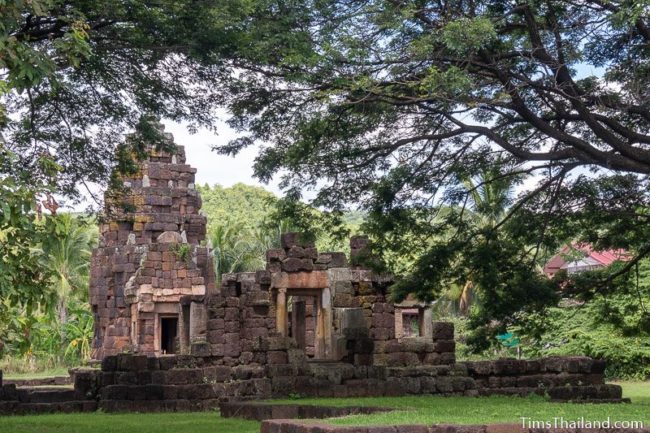
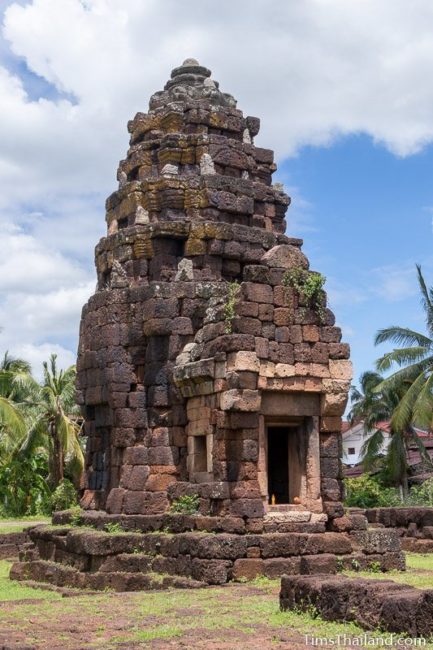
The prang tower is in pretty good shape with its lotus-bud top intact and much more carving on the laterite (which would have been covered with plaster) than you usually find, including a lotus and a human or deity figure (perhaps a Buddha). Most of the antefixes are guardians and they are mostly broken, but on the south face are two that notable; the upper one is the god of the dead Yama riding his buffalo and the one below him is too eroded to identify, but it could be another Yama.
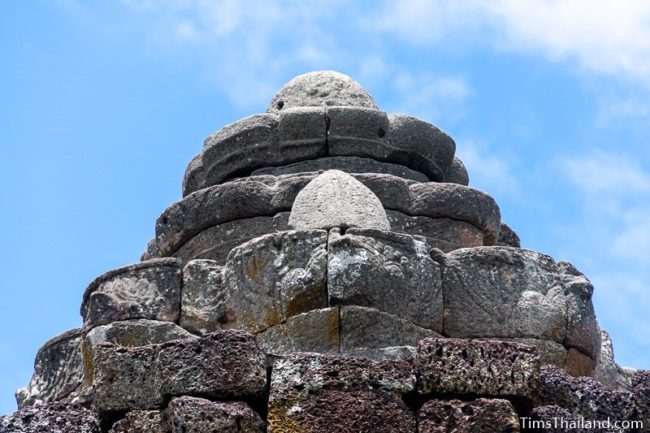
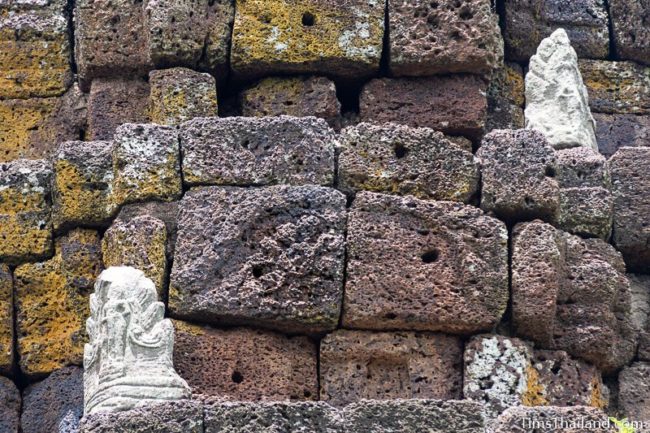
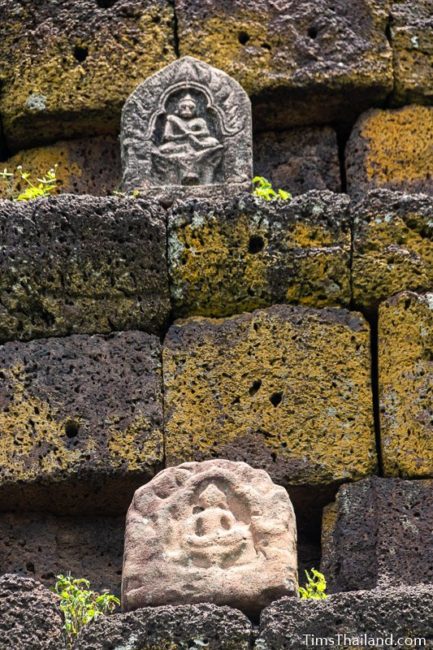
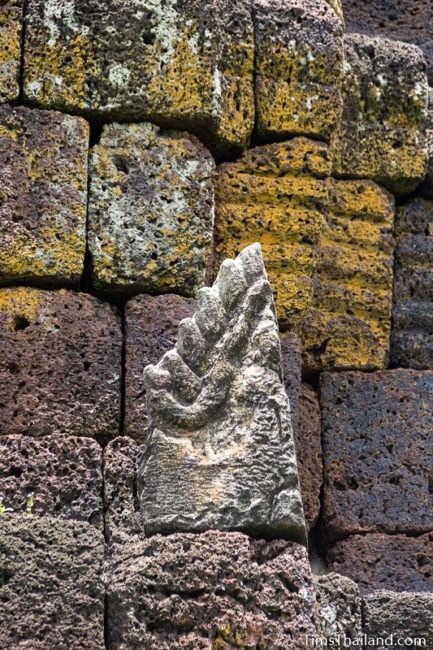
There’s no significant carving around the doorways of the short mandapa entrance way to the interior of the prang, although a few lines were added and the octagonal shape of the colonettes has been roughed out. Most of the original sandstone blocks for the pediment above the entrance are gone, but there are still enough to show that this carving was also not done. There is a window only on the mandapa‘s south side and there are the standard three false doors to the north, west, and south.
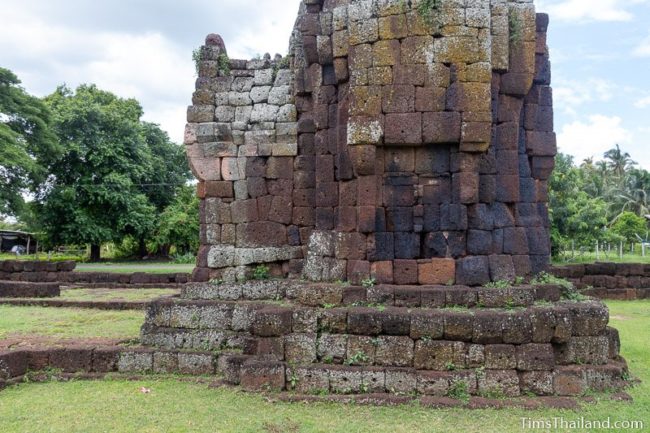
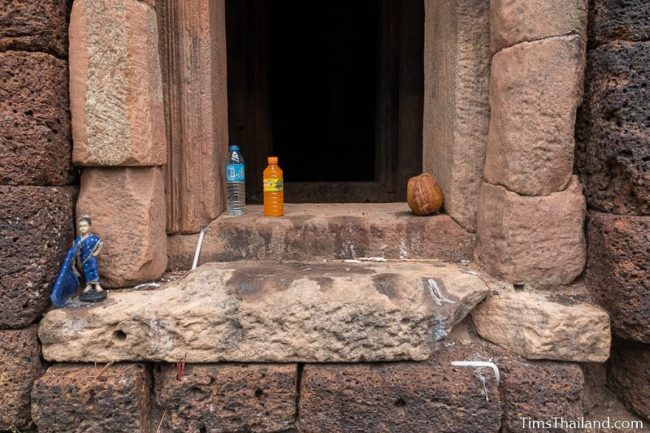
Inside there is no shrine, pedestal, or anything else, but people leave offerings to a rue-sii (mystical healer) that some local person met in a dream or vision of some sort.
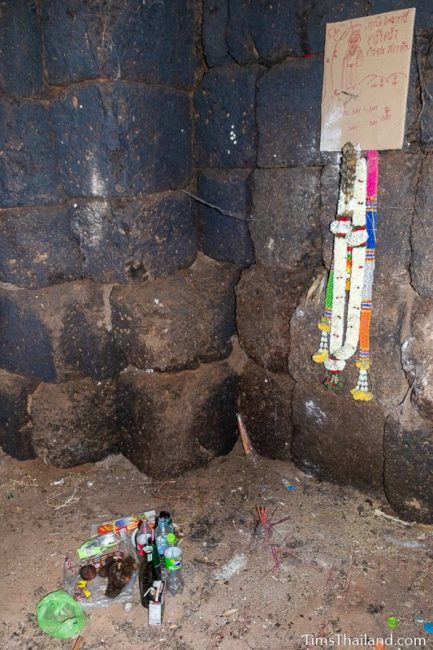
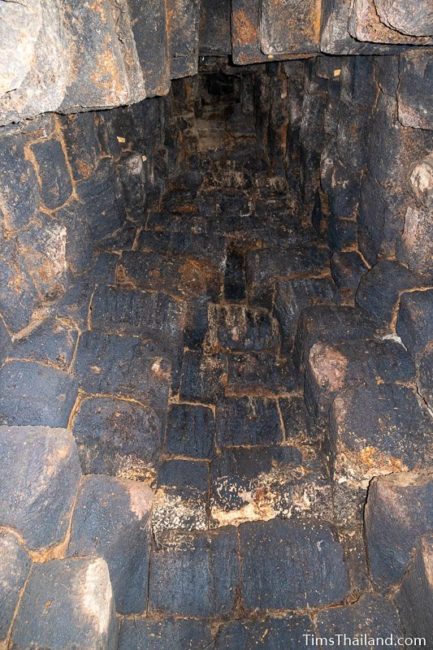
All that’s left of the bannalai is the foundation.
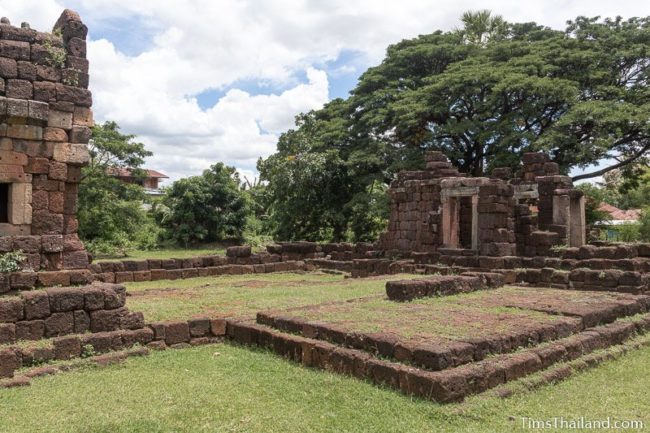
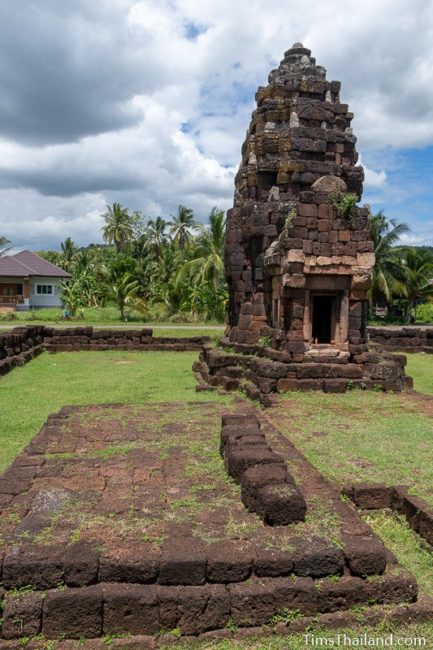
Only about half of the gopura still stands and it only has the same limited doorway carving as the mandapa. The north wing has a single window and the south wing (which is mostly gone) probably would have had two windows, to mirror the mandapa‘s southern window. Not much of the adjoining enclosure still stands.
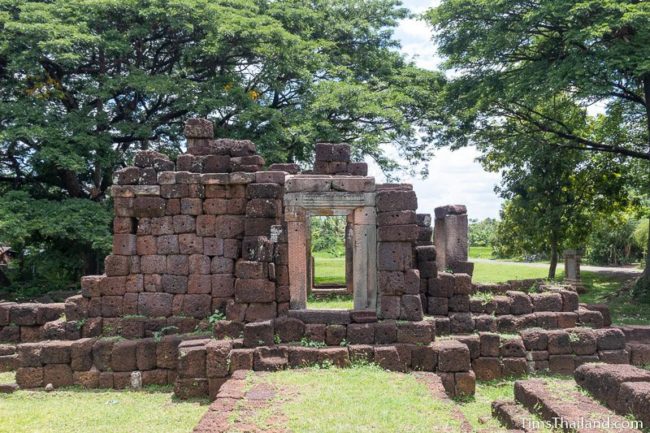
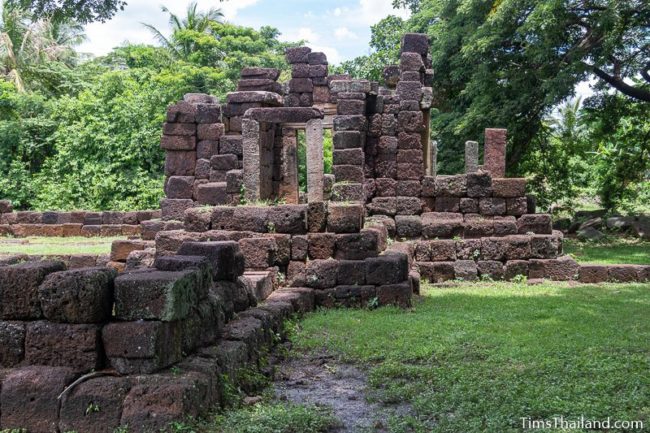
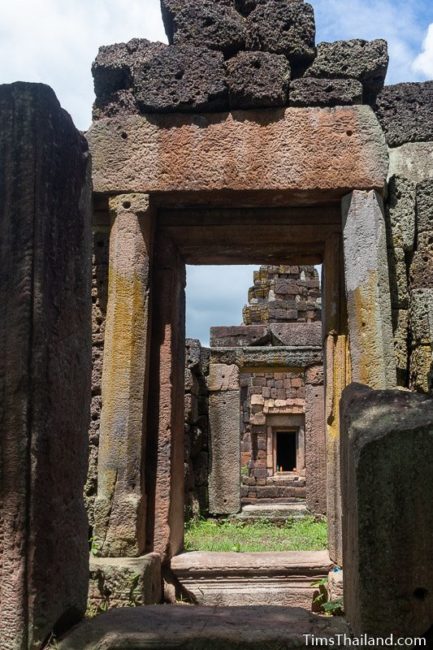
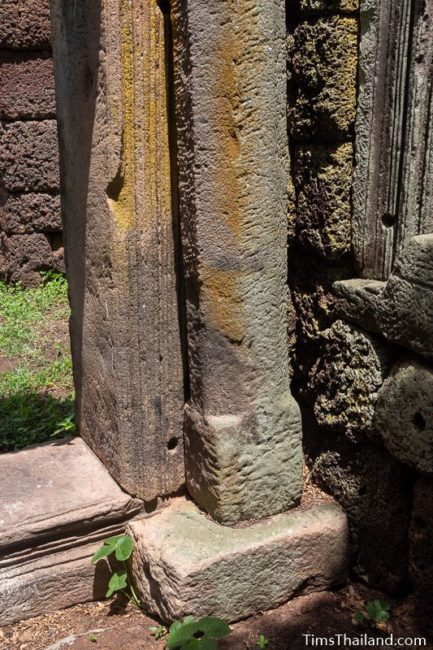
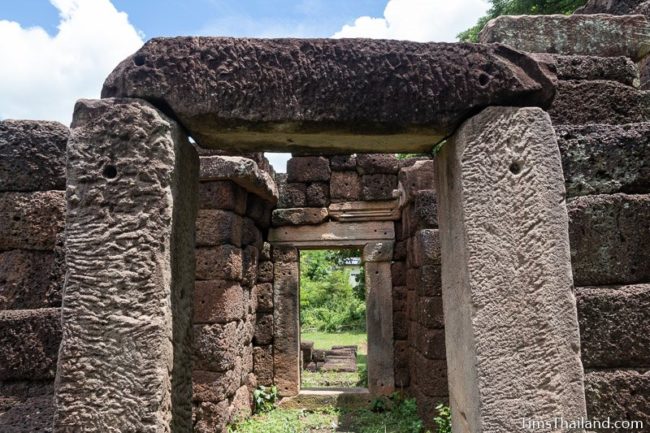
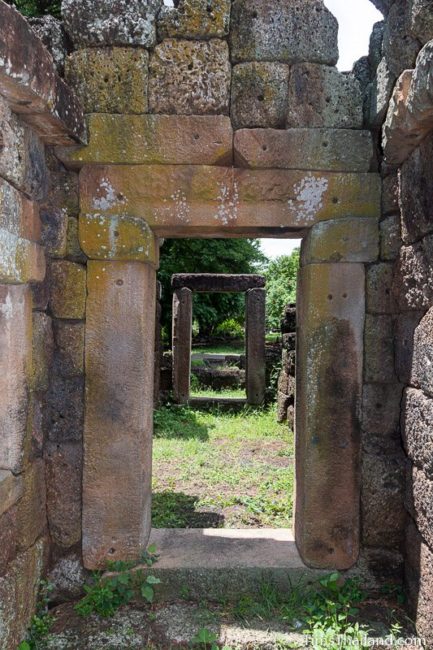
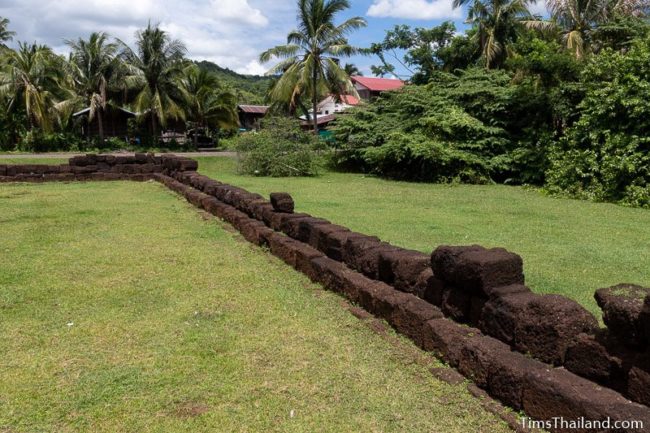
A laterite walkway connects the gopura to the main sanctuary. There’s also a platform, this one cruciform-shaped with redented corners, outside the front of the gopura, though it now only has laterite on the edges.
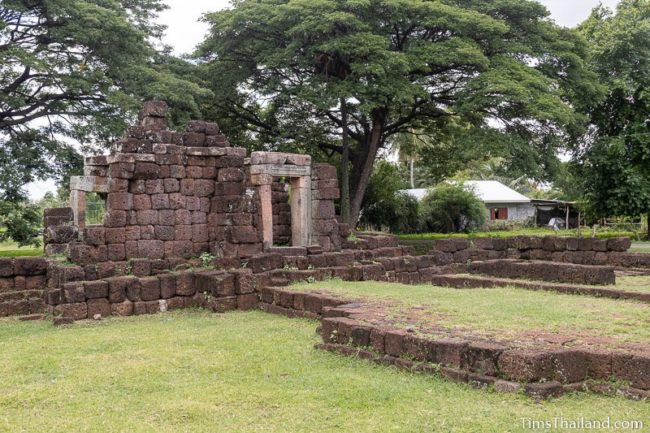
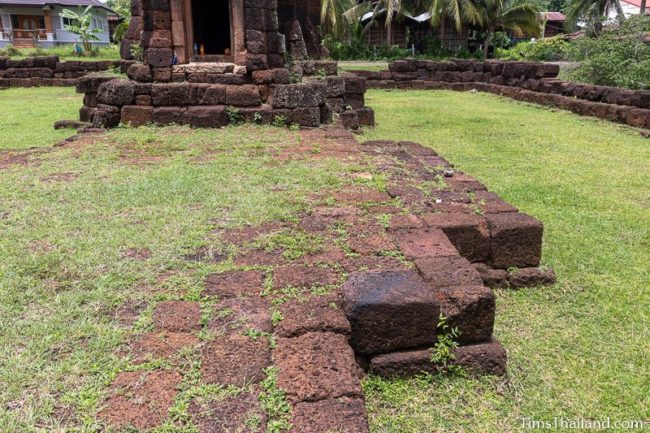
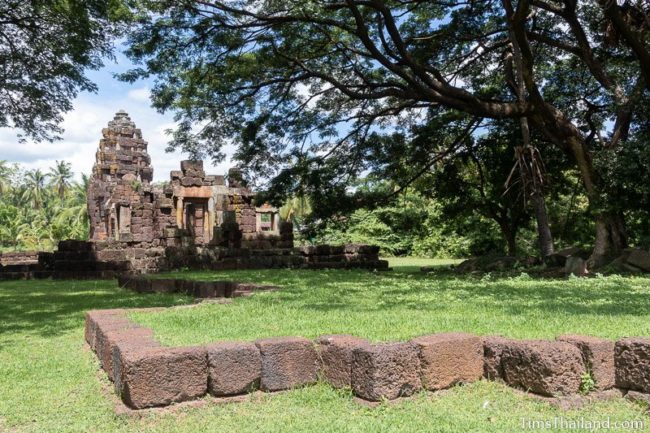
The sacred pond to the northeast still has its laterite steps. Excess sandstone not used in the restoration is piled up next to the pond under some rain trees and includes two pedestals and several blocks with decorative carving.
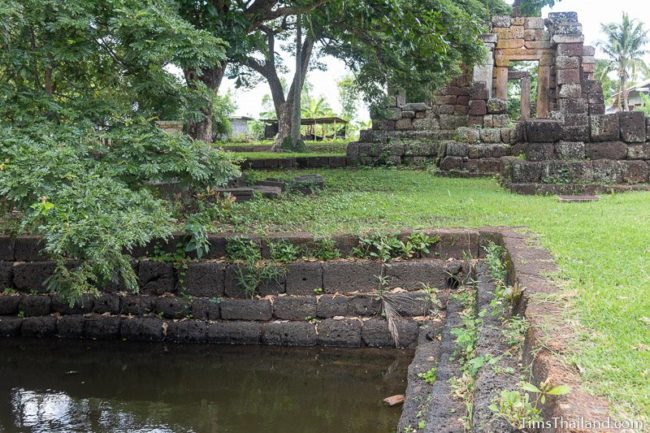
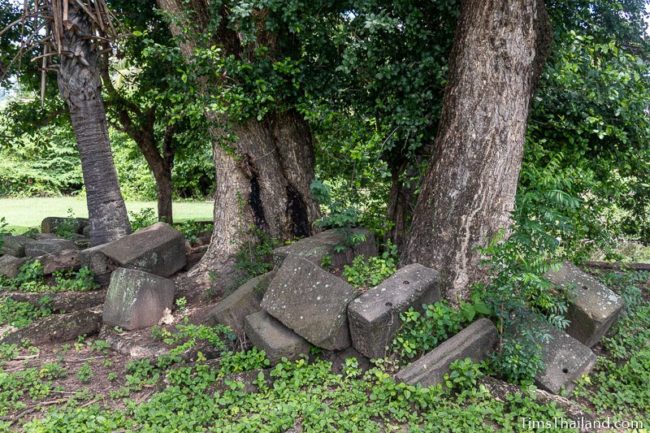
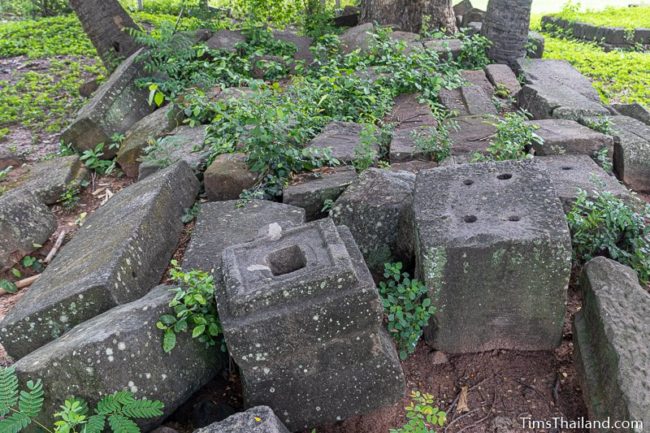
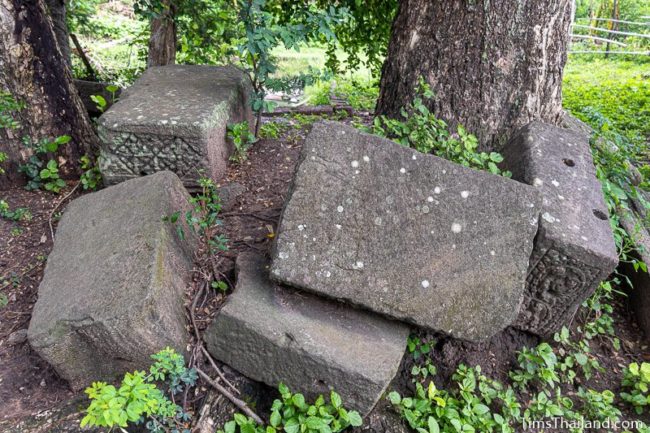
Nearby to the north is an 850 x 350m baray that once served a large community living here. The historical sign says there was a laterite edge, but it is gone now – although perhaps there is still a little laterite burried in the mud or laying around somewhere not easily seen as you walk around the baray.
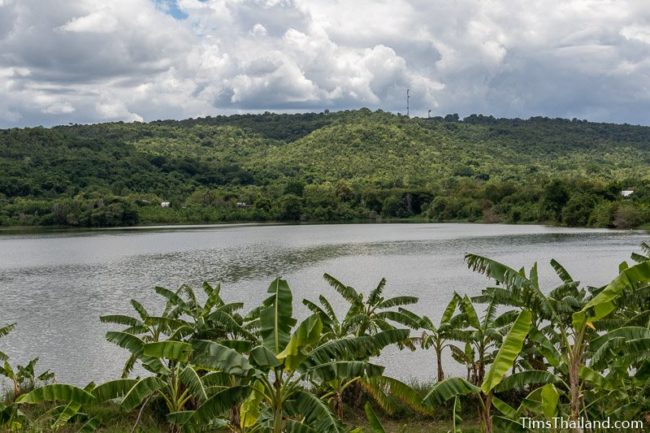
There’s another arogayasala, Kuti Ruesi Ban Khok Mueang, just three and a half kilometers south. Fans of Khmer ruins will want to see both, but if time is limited Kuti Ruesi Ban Khok Mueang is more complete and in a more evocative setting.
Location – Ban Nong Bua Rai, Tambon Chorakhe Mak, Amphoe Prakhon Chai, Buriram Province
Other Names – Kuti Reusi Nong Bua Rai (กุฏิฤๅษีหนองบัวลาย), Kuti Ruesi Ban Nong Bua Lai (กุฎิฤษีบ้านหนองบัวลาย), Kuti Reussi #1 (กุฎิฤษี 1), Prasat Hin Kuti Ruesi (ปราสาทหินกุฏิฤาษี), Prasat Nong Bua Rai (ปราสาดค์นองบัวราย), Prasat Nong Kong (ปราสาทหนองกง), Prasat Sra Phleng (กุฎิสระเพลง), Kuti Sra Phleng (ปราสาทสระเพลง), Kuti Rishi. Locals call it Prasat Noi (“Small Temple”) as opposed to nearby Phanom Rung, the big temple.